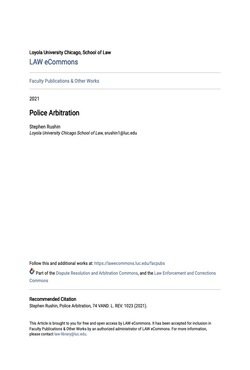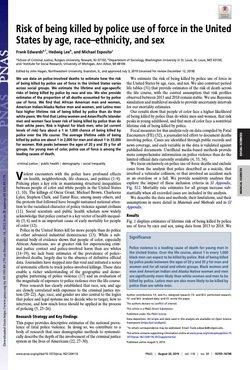By Frank Edwards, Hedwig Lee, and Michael Esposito
This article from the National Academy of Sciences of the United States of America estimates the variation in the risk of being killed by police use of force in the U.S. across racial groups. The authors found that risk of being killed by police peaks between the ages of 20 and 35 for men and women of all racial groups. Black men and women, as well as American Indian/Alaska Native men and women, and Latino men have a much higher lifetime risk of being killed by police than their white counterparts. The highest risk, however, was among Black men who face a one in 1000 chance of being killed by police over their lifetime. Presently, police violence is the leading cause of death for young Black men in the United States.
Proceedings of the National Academy of Sciences of the United States of America 2019; 116(34): 16793-16798.





















